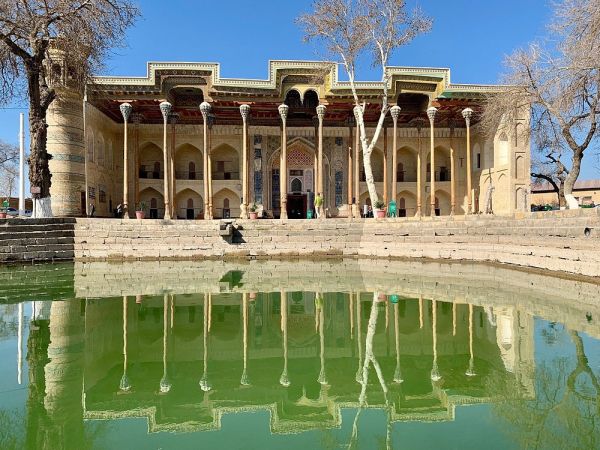The Bolo House Ensemble
The largest eastern cities had one distinctive feature in common, namely the obligatory presence of a Registry Office. This was the name of the central city square, where many public buildings were located. Here were the main city mosques, majestic palaces and minarets, as well as hospitals, chambers of commerce and the chancery.
Bukhara also had its own Registan, located opposite the fortress named Ark. Unfortunately, of all the buildings in this huge area of Bukhara, only the Bolo House complex has managed to survive to our time. It was built at the beginning of the 17th century by order of Emir Shakhmurad, who at that time was the ruler of Bukhara. The emir sought to prove to the residents of the city that he was just an ordinary person. Therefore, he wanted to erect a public mosque on Registan, which he personally planned to visit every Friday.
The name of the complex translates into Russian as "Children's pond". This is due to the fact that the Bolo House was used as a water source. There were problems with the availability of drinking water in almost the entire territory of Central Asia. Because of this, it was necessary to build artificial reservoirs (Houses) capable of supplying life-giving moisture to all residents of the city. Water carriers scooped water from reservoirs and carried it for a fee to the bazaar, hospitals and residential areas.
This tendency of water separation persisted in the Bolo House until the advent of Soviet power. The new government has banned residents of the city from using an artificial reservoir to avoid massive diseases from stagnant water. But the local population continued to use this particular water out of old habit, so this reservoir had to be completely drained.
The mosque has managed to survive to this day and still accepts everyone who wants to pray on Fridays. The building itself still has an elegant and luxurious look (do not forget that it was built for the ruler himself), which makes it one of the most popular attractions of modern Bukhara. For more than three centuries, the building has been decorated with twenty elaborately carved wooden columns that confidently support the mosque's ceiling. The residents of the city call the Bolo House nothing else than the "mosque of the forty pillars." This name was given to this complex for the twenty columns and their reflection in the pond.
Near the mosque there is a minaret, which was built in 1917. It is made in an elegant style, and also successfully combines the luxury and smallness of Asia. For quite a long time, the minaret was slightly tilted, gradually increasing the degree of tilt. Many compared it to the famous Leaning Tower of Pisa in Italy. But after the reconstruction, the building was thoroughly reinforced and installed strictly vertically.





















